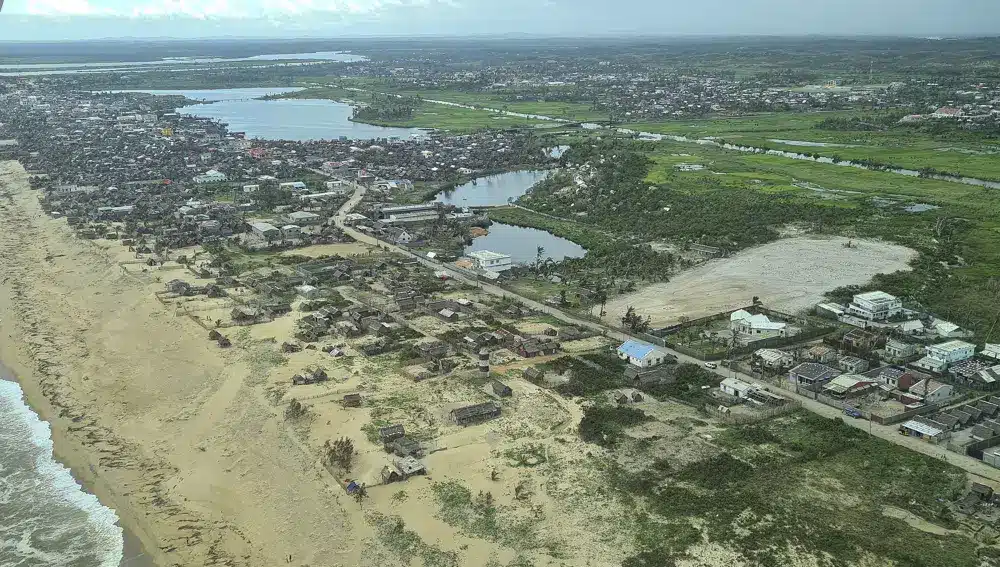MANANJARY, Madagascar – Southeast Madagascar has been hit by three powerful storms in a year, resulting in “catastrophic” famine in remote, inaccessible places that have received little international attention, according to humanitarian organizations.
Cyclone Batsirai struck in February 2022, followed by Cyclone Emnati two weeks later. Then, in February of this year, Cyclone Freddy landed on the Indian Ocean island. According to a report by UNICEF and Madagascar’s National Office for Nutrition, the combined impact affected 60%-90% of farming regions in the southeast and largely destroyed food crops.
People like Iavosoa, a distraught young mother whose 10-month-old daughter, Soaravo, was at risk of dying before her first birthday due to acute malnutrition, feel the pain. Iavosoa, who only supplied her first name to protect her privacy, also has a 3-year-old son who is malnourished.
Last month, a team from the humanitarian organization Doctors of the World brought her children and two other severely malnourished children, both under the age of two, to a hospital in the city of Mananjary on Madagascar’s east coast after a group of parents and their children were discovered walking through the bush to reach the nearest health center.
Soaravo groaned softly at the hospital as her mother rocked the infant to soothe her. The child weighed only 2 kilograms (4.4 pounds) and resembled a preterm infant, with eyes nearly too wide for her tiny skull. Doctors say she should weigh four to six times her age.
Southeast Madagascar has been hit by three powerful storms in a year, resulting in “catastrophic” famine.
“If my daughter is in this state, it’s because we don’t have enough food where we live,” said Iavosoa. “I was sick with dysentery for two months.” I was almost out of milk. I was completely exhausted. My hamlet is three hour walk from the first basic health center. I couldn’t pamper myself because I couldn’t travel such a long distance.”
“And then she (Soaravo) became ill as well.” Then came Cyclone Freddy. “It destroyed our house and ravaged our village,” she claimed.
Iavosoa wore a tattered T-shirt and a piece of fabric wrapped around her waist, saying she wasn’t sure of her age but assumed she was between 21 and 24. She needed footwear. Everything she owned was wrapped in a cotton bundle on the hospital floor. She is a single parent.
Iavosoa looked at her daughter, a dismayed expression on her face. “She’s just turned 10 months old,” she explained.
The families spotted walking roughly 30 kilometers from the hospital were discovered by chance when a Doctors of the World team went to assess the quality of health facilities in places beyond Mananjary, according to Joaquin Noterdaeme, a coordinator with the organization known in French as Médecins du Monde.
Soaravo was treated for an illness and diarrhea, and malnutrition was addressed with a special milk formula. Doctors predicted that she would be hospitalized for at least a month. Her mother and brother moved in with her because they had nowhere else to go.
According to a Feb. 28 report by UNICEF and the National Office for Nutrition, more than a quarter of the population in Madagascar’s southeastern area, or around 870,000 people, do not have enough food and are at risk of hunger.
According to humanitarian organizations, Soaravo and the other hospitalized youngsters are a drop in the bucket.
“This is a nutrition emergency,” said Jean-Francois Basse, UNICEF’s representative in Madagascar, describing the situation in rural regions as “catastrophic.”
The cyclones left scars on the hospital as doctors worked to save Soaravo’s life. Some of its structures are nothing more than shells. The walls were barely standing, but parts of the roof had collapsed. Some patients were treated outside in a tent.
Few trees stand upright in and around Mananjary, which bore the brunt of the cyclones racing in from the Indian Ocean and where Freddy made landfall. They were ripped out or left lurching at 45-degree angles by the cyclones, demonstrating the intensity of the wind brought by the storms.
Homes were demolished, rebuilt, then demolished again.
According to Brian Willett, head of mission in Madagascar for Doctors Without Borders, also known as Médecins Sans Frontières, people living in remote districts like coastal Nosy-Varika and the mountainous region of Ikongo were extremely vulnerable to hunger before the cyclones and children across southeast Madagascar experienced chronic malnutrition.
“But, with the repeated climate shocks of the past year, their resilience has been exceeded,” he said. “Today, one in every four children is acutely malnourished.” These children face death if they do not receive medical attention.”
Willett suggested that mothers who couldn’t feed their children would participate in “acts of desperation,” referring to stories that some were selling their children to save them from famine.
SOURCE – (AP)












